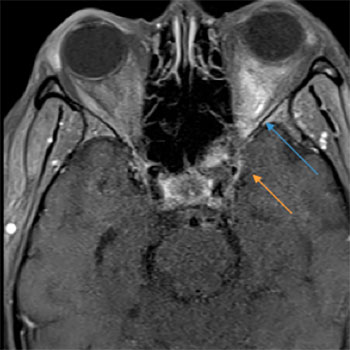Keywords
Orbital apex syndrome, superior orbital fissure, optic canal, optic nerve, type II diabetes mellitus, sphenoid sinusitis
Abstract
Orbital apex syndrome (OAS) is an uncommon disorder characterized by visual loss, ophthalmoplegia, ptosis and hypoaesthesia of the forehead[1]. OAS may result from a variety of inflammatory, infectious, neoplastic and vascular conditions that cause damage to the superior orbital fissure (with resultant oculomotor (III), trochlear (IV), abducens (VI) and ophthalmic branch of the trigeminal nerve (V1) palsies) and to the optic canal leading to optic nerve (II) dysfunction. This case report describes the clinical development of OAS in a patient with bacterial sphenoid sinusitis.
References











